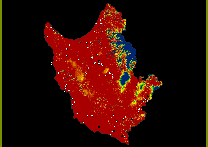Abstract
Over the past few decades numerous approaches to archaeological predictive modeling have been presented but more recently the application of Dempster-Shafer theory has provided advancement in the way these models can handle uncertainty, ignorance and bias. As these factors are highly prevalent in archaeology, and in particular archaeological survey, the Dempster-Shafer technique of predictive modelling is one which should be looked at closely not only by archaeologists but also cultural heritage management. It is hoped that a predictive model based upon empirical data and which utilises Dempster-Shafer theory can help provide academics and planners with a tool capable of assessing the archaeological "potential" of an area. This study will focus on data from the Western Cyprus Survey (WCS), whose aim is to investigate the nature and extent of regional interaction prior to the Bronze Age. Environmental variables will be investigated to see if relationships occur between them and the WCS site locations. Suitable variables will then be placed into the Belief Module of Idrisi, which employs Dempster-Shafer theory, where the predictive model will be constructed. Finally an element of uncertainty will be introduced into the model to quantify the impact of archaeological bias.



